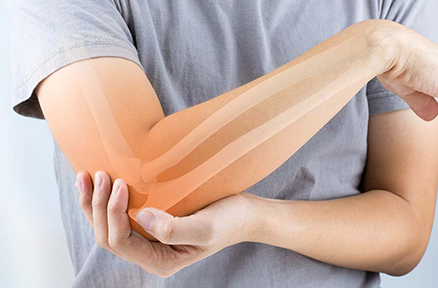What should I expect getting a wrist cast?
Transcript
After the doctors have instructed me to put a wrist cast for a wrist sprain, a distal radius fracture (broken wrist), ulna fracture or something in the wrist we are going to do a short arm cast.
When a patient comes in I have them put their elbow in the little doughnut for comfort. Put them in a nice neutral position for the wrist. The first thing we want to do is put a stockinette on, which helps with the itching and also makes the edges look really nice.
If you can just keep your arm there the whole time I will work around you.
Tape down the edges so it doesn’t come undone. A little bit of padding, we want to be as wrinkle-free as possible with this padding. We’re padding any bony prominence more than we think we need. A nice even padding up and down the arm. Make sure everything’s covered.
Now we are going to put the hard wrist cast on. I need gloves to protect myself from the fiberglass. Once you get the first layer on you have to mold the cast to the patient and put them in a position of function.
A position of function is the best functionality for the patient after the wrist cast comes off. Because they are going to be stiff when they get out of this cast if you’ve cocked the wrist wrong or do something else wrong they’re going to be stiff in that position. So we have to mold the cast in the best functional position that we can.
There’s also landmarks to the cast, we want to see the palmar crease of the hand, we want the thumb to have a lot of range of motion in it so when they do come out of the cast they have less stiffness. And the physical therapist likes us better.
This next roll of fiberglass is just the color that they have chosen, she chose pink today. It makes the cast look really nice and gives it another reinforcement layer.
So for most people that get casts, we need to give them some instructions while they are in their cast. Our normal instructions that we give are to:
- Keep it elevated
- Wiggle your fingers as much as the cast will allow
- Keep it nice, dry and clean
- You have got to treat the cast so it helps you. If you get it wet and nasty you have to come in and get changed. A couple of drops of water or fine but if it gets really wet inside the cast they would have to come in as soon as possible and get it changed. It would be like having a wet sock on your arm all the time.
- No scratching inside the cast
- We wouldn’t want her to scratch her skin up and give herself an infection. If this was a surgical patient you wouldn’t want to get the surgical site infected, it can get into the bone and that’s bad news.
As you can see she has a nice good movement in her fingers. Wiggle your fingers? Touch your pinky to your thumb? And as long as she can do that she’s in the proper position for a wrist cast.
What should I expect when getting a cast removed?
Transcript
Before we cut a cast-off of any patient we have to ask them if they have you ever had a cast cut off before. Have you ever had a cast cut off before?
“No.”
This is a saw but it is not a saw that spins in a circle, instead, it vibrates. When it touches anything soft like your skin it’s just going to move it. When it cuts through the cast it won’t even cut through the cotton of the cast. I’m going to turn this on, and it is loud and scary.
Now once we get to this point the cast is cut and we use these things called cast spreaders. And we’re going pop it like you are popping a walnut or something, crack it open.
Scissors to just cut this off here. The cast just slides off. If you look, it doesn’t even cut through the cotton of the cast.
That’s how you cut a cast off.



